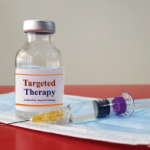 The Potential of Treat-to-Target Management for Patients with SpA
The Potential of Treat-to-Target Management for Patients with SpA
SINGAPORE—The practice of medicine is both a science and an art. In recent years, rheumatology has seen a push toward incorporating objective treat-to-target strategies into patient care rather than clinicians relying on vaguer measures of success, such as the subjective opinion of the medical provider about to how the patient is doing. Although the adoption of treat-to-target has accelerated for such conditions as rheumatoid arthritis and gout, that change is less true for the management of spondyloarthritis (SpA).
At the 26th Congress of the Asia Pacific League of Associations for Rheumatology (APLAR) in August 2024, Muhammad Haroon, PhD, MSc Sports Medicine, MBBS (KE), CSCST (Rheum), CSCST (GIM), FRCPI, FFSEM, FACR, consultant rheumatologist, head of the Department of Rheumatology, Fatima Memorial Hospital and FMH College of Medicine and Dentistry, Lahore, Pakistan, discussed treating to target for SpA in detail.
Treat to Target
Dr. Haroon began by defining the treat-to-target paradigm, which was first made popular for the management of diabetes. Several key elements are:
- Choosing a target;
- Regularly monitoring well-validated outcome measures;
- Modifying therapy when needed; and
- Engaging the patient in shared decision making.
The idea of using treat to target for patients with SpA began as early as 2014, but that was mostly based on expert opinion. Solid evidence supporting the efficacy of the practice for patients with SpA has been lacking. In fact, the 2019 SPARTAN guideline conditionally recommend against treat to target in SpA.1
Dr. Haroon discussed the rationale for treating to target throughout the majority of his lecture. This approach is intriguing due to several clinical observations:
- There appears to be a longitudinal association of disease activity in SpA with the progression of radiographic damage; and
- In patients who achieve remission, there is tends to be little to no radiographic progression.
The Data
To date, the most important study on treat-to-target in patients with SpA is TICOSPA, an open one-year clinical trial with a main objective of comparing the benefits of tight control/treat-to-target management in axial SpA (axSpA) vs. that of usual care (i.e., adjusting the patient’s medication without the specific use of outcome-based targets). In this prospective, cluster-randomized controlled study, researchers enrolled 160 participants who met Assessment of SpondyloArthritis international Society (ASAS) criteria for axSpA, had an Ankylosing Spondylitis Disease Activity Score (ASDAS) of ≥2.1, did not have optimal outcomes with non-steroidal anti-inflammatory drugs (NSAIDs) and were biologic naive.2
In the tight control/treat-to-target group, visits occurred every four weeks and a pre-specified strategy of treatment intensification until the patient achieved the target ASDAS of <2.1. The usual care group had visits every 12 weeks and treatment was at the discretion of the rheumatologist. The main outcome was the percentage of patients with a ≥30% improvement on the ASAS-Health Index (ASAS-HI).
By the conclusion of the trial, no significant difference was observed in the main outcome of the tight control/treat-to-target group vs. the usual care group (47.3% vs. 36.1%). All secondary efficacy outcomes (i.e., partial responses for ASDAS, BASDAI, the patient’ global assessment of disease activity, etc.) were more frequent in the tight control/treat-to-target group than the usual care arm; however, these differences did not reach statistical significance. Tight control/treat to target was shown to result in more overall cost savings than usual care.2
Analysis
Although TICOSPA was deemed a negative study, Dr. Haroon had several thoughts as to why we may want to reconsider its findings. In the study, only about 26% of patients achieved low disease activity overall, whereas this number—historically, from other trials—has been closer to 45–50%.
He also noted that NSAID use was low in the study. A question remains about whether combining NSAIDs with a biologic medication may work better than biologic monotherapy for patients with SpA. Additionally, only tumor necrosis factor-alpha inhibitors were used in TICOSPA. We now have a host of other biologics routinely used to manage SpA that may, in some patients, have better efficacy.
Dr. Haroon also explained that the total number of participants in the study was small and may have been underpowered to detect a significant difference between the groups. Additionally, only axSpA Centers of Excellence were included in the study. Thus, usual care in these centers may have differed from that seen in more general rheumatology practice.
Treatment Targets
Dr. Haroon presented a compelling case for thinking more deeply about treat- to target for patients with SpA. He noted that knowledge gaps exist in the world of SpA regarding the best treatment target to use, how frequently to measure this target and how to measure it.
Traditionally in rheumatology, targets are remission or low disease activity.” But how should this be applied in patients with SpA when they may have domains of disease that don’t align with one another (e.g., peripheral arthritis, dactylitis, enthesitis, axSpA and extra-articular manifestations)?
Additionally, many of the disease activity scores used for SpA (i.e., ASDAS, BASDAI, ASAS-PR) may not apply well—specifically to axial involvement. Of these scores, Dr. Haroon notes that ASDAS probably best represents patients with axial disease, but ASDAS does not include extra-articular manifestations. Thus, the score can be 0 even when these features are present and active. Also, health-related quality of life may still be poor in patients despite a low ASDAS score, indicating potential disagreement between how the patient appears to be doing objectively and how they are feeling and functioning in reality.
Dr. Haroon presented an alternative: Using the change in ASDAS score from before to after treatment intervention. In fact, studies have shown that a change of 1.1 units in the ASDAS score is clinically meaningful.3,4
Timely Diagnosis
Finally, Dr. Haroon described the important window of opportunity, which may be key for treating patients with SpA, particularly those with axial involvement. Diagnostic delay is an issue that commonly plagues this window—when young patients with inflammatory back pain symptoms are not recognized as having signs of disease and not promptly referred to a rheumatologist for evaluation.
Early in the disease course is the ideal time to employ disease-modifying therapy that may prevent joint damage and chronic changes. It’s this window of opportunity—early in the course of disease—that may be the best period during which to study treat to target. Thus, attempting to see if we can change the disease trajectory for patients and save them from the long-term consequences of uncontrolled disease.
The jury is still out on treat-to-target for patients with SpA, but Dr. Haroon’s message was clear: Don’t give up on this strategy just yet.
Jason Liebowitz, MD, is an assistant professor of medicine in the Division of Rheumatology at Columbia University Vagelos College of Physicians and Surgeons, New York.
References
- Ward MM, Deodhar A, Gensler LS, et al. 2019 update of the American College of Rheumatology/Spondylitis Association of America/Spondyloarthritis Research and Treatment network recommendations for the treatment of ankylosing spondylitis and non-radiographic axial spondyloarthritis. Arthritis Care Res (Hoboken). 2019 Oct;71(10): 1285–1299.
- Molto A, López-Medina C, Van den Bosch FE, et al. Efficacy of a tight-control and treat-to-target strategy in axial spondyloarthritis: results of the open-label, pragmatic, cluster-randomised TICOSPA trial. Ann Rheum Dis. 2021 Nov;80(11):1436–1444.
- Liew JW, Dubreuil M. Treat to target in axial spondyloarthritis: Pros, cons and future directions. Rheum Dis Clin North Am. 2020 May;46(2):343–356.
- Dougados M. Treat to target in axial spondyloarthritis: From its concept to its implementation. J Autoimmun. 2020 Jun;110:102398.

